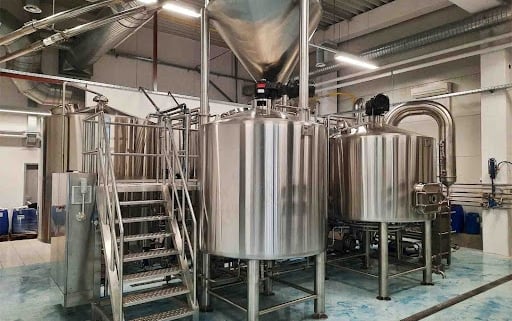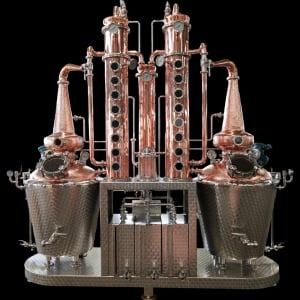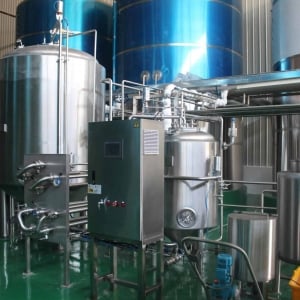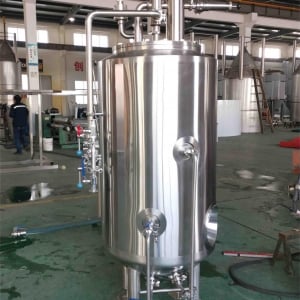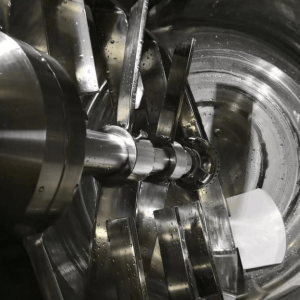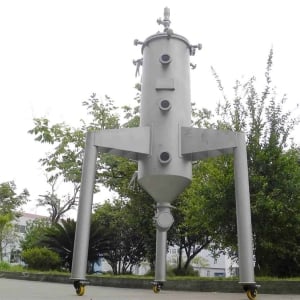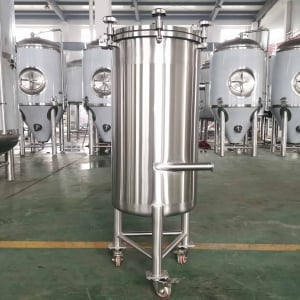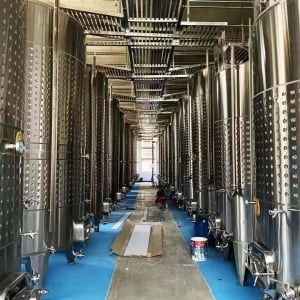The Ultimate Guide to Beer Fermentation Tanks
Overview of Beer Fermentation Tanks
Beer fermentation tanks are critical components in the brewing process. These specialized containers are where the magic happens, where yeast converts sugars in the wort into alcohol, carbon dioxide, and various flavor compounds. Without fermentation tanks, you wouldn’t have beer as we know it today. These tanks come in various sizes, shapes, and materials, each tailored to specific brewing needs. Whether you’re a homebrewer or running a large-scale brewery, understanding the intricacies of fermentation tanks is essential.
Equipment Guide for Beer Fermentation Tanks
When diving into the world of beer fermentation, the equipment you choose can make a significant difference in the quality and efficiency of your brewing process. Fermentation tanks are available in a wide range of options, each designed to meet specific brewing requirements. Here’s a breakdown of what you need to consider:
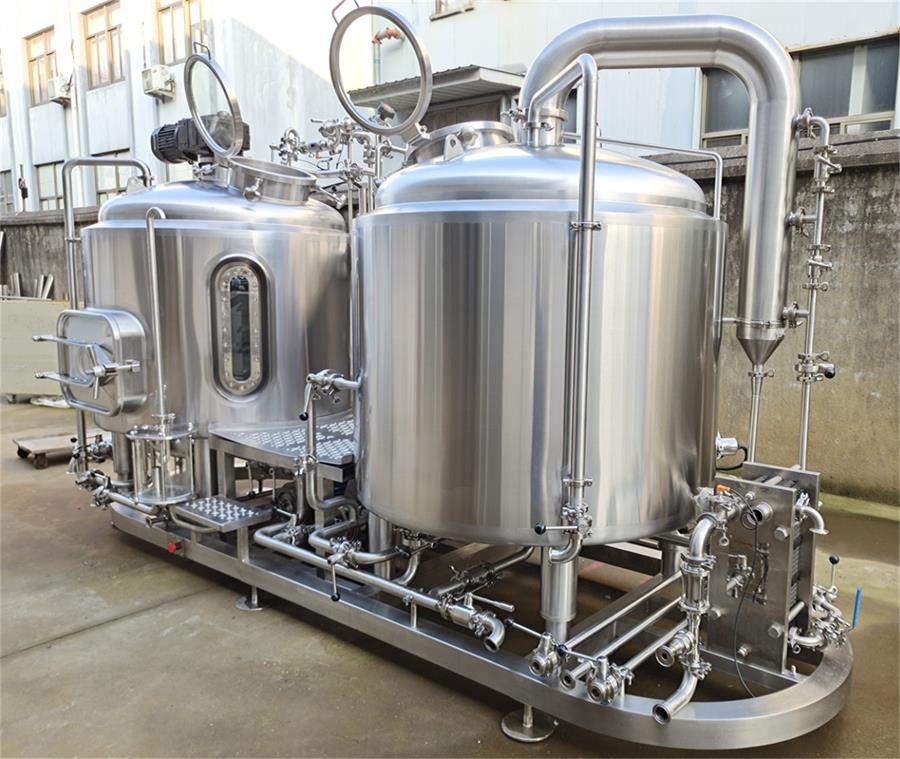
Types of Beer Fermentation Tanks
Beer fermentation tanks come in several types, each designed for different brewing scales and styles. The most common types include:
- Conical Fermenters: These tanks have a cone-shaped bottom, making it easier to remove yeast and sediment. They are highly popular among professional breweries and advanced homebrewers.
- Unitanks: These are versatile tanks that can be used for both fermentation and conditioning. Unitanks save space and reduce the need for multiple vessels.
- Cylindroconical Tanks: These tanks are a hybrid between cylindrical and conical shapes. They are favored for their ability to handle high-pressure fermentation.
- Open Fermenters: These are traditional fermentation tanks without a closed top. They are often used for specific beer styles like certain ales, where exposure to air is desirable.
Presenting Equipment Types
| Type of Fermentation Tank | Description | Ideal For |
|---|---|---|
| Conical Fermenters | Cone-shaped bottom, easy yeast removal, and sediment separation. | Professional breweries, advanced homebrewers |
| Unitanks | Dual-purpose tanks for fermentation and conditioning, space-saving. | Small to medium breweries, space-conscious brewers |
| Cylindroconical Tanks | Combines cylindrical and conical shapes, ideal for high-pressure fermentation. | Breweries focused on lager and other pressure-dependent styles |
| Open Fermenters | Traditional, open-top design for specific ale styles needing air exposure. | Traditional ale brewers, specialty brews |
The Brewing Process Using Beer Fermentation Tanks
Brewing beer is a complex, yet fascinating process that relies heavily on fermentation tanks. Understanding the role of these tanks in the brewing process is crucial for anyone looking to brew high-quality beer. Here’s a step-by-step look at how beer fermentation tanks are used during brewing:
1. Wort Preparation
Before fermentation can begin, the wort must be prepared. Wort is the liquid extracted from the mashing process during the brewing of beer. It contains the sugars that will be fermented by the yeast to produce alcohol. Once the wort is ready, it’s transferred into the fermentation tank.
2. Yeast Pitching
Once the wort is in the fermentation tank, yeast is added to kickstart the fermentation process. The type of yeast used can vary depending on the beer style. The yeast will consume the sugars in the wort, producing alcohol, carbon dioxide, and various flavor compounds.
3. Primary Fermentation
During primary fermentation, yeast activity is at its peak. This phase can last anywhere from a few days to a couple of weeks, depending on the beer type. The temperature within the tank is carefully controlled to ensure optimal yeast activity.
4. Secondary Fermentation (Optional)
Some beers undergo a secondary fermentation process, which can take place in the same tank or a different one. This step helps in further developing the beer’s flavors and carbonation.
5. Conditioning and Aging
After fermentation, the beer is conditioned. This process involves aging the beer to allow flavors to meld and any unwanted by-products to dissipate. This can be done in the same fermentation tank or in separate conditioning tanks.
6. Clarification and Packaging
Once conditioning is complete, the beer is clarified to remove any remaining yeast and sediment. After clarification, the beer is ready for packaging, whether it’s being bottled, canned, or kegged.
Beer Fermentation Tank Capacity, Spaces, Design, Layout, Customization
When selecting a fermentation tank, several factors such as capacity, design, and layout are essential. These elements play a critical role in determining the efficiency of your brewing process.
Capacity and Space Considerations
The capacity of your fermentation tank should align with your production goals. For homebrewers, smaller tanks ranging from 5 to 20 gallons might suffice, while commercial breweries often require tanks that can hold thousands of gallons.
| Capacity (Gallons) | Ideal Usage | Space Requirements |
|---|---|---|
| 5-20 Gallons | Homebrewing, small batch production. | Minimal space, can fit in home kitchens or small areas |
| 50-200 Gallons | Microbreweries, small craft breweries. | Requires dedicated brewing space, small brewing rooms |
| 500-1000 Gallons | Medium-sized breweries, expanding production. | Needs a substantial brewing space, with dedicated ventilation |
| 2000+ Gallons | Large breweries, mass production. | Requires a large industrial space, customized brewing facility |
Design and Layout Customization
The design of your fermentation tank can be customized to suit your brewing needs. Tanks can be vertically or horizontally oriented, jacketed for temperature control, and made from various materials such as stainless steel or polyethylene. The layout of your brewing space also influences the type of tank you should choose.
- Vertical Tanks: Space-saving, often used in breweries with height restrictions.
- Horizontal Tanks: Ideal for lagering and other long-term conditioning processes.
- Jacketed Tanks: Essential for maintaining precise temperature control during fermentation.
- Non-Jacketed Tanks: Simpler design, suitable for breweries in temperature-controlled environments.
Customization Options
Customization is key to optimizing the brewing process. From adding additional ports for sampling to integrating advanced control systems, customizing your fermentation tank ensures it meets your specific brewing needs.
Beer Fermentation Tank Suppliers and Price Range
The cost of a beer fermentation tank can vary significantly based on size, material, and additional features. Here’s a look at what you might expect when sourcing a fermentation tank:
| Supplier | Tank Type | Material | Price Range |
|---|---|---|---|
| Blichmann Engineering | Conical Fermenters | Stainless Steel | $500 – $2,500 |
| SS Brewtech | Unitanks, Conicals | Stainless Steel | $1,000 – $5,000 |
| Spike Brewing | Customizable Conical Fermenters | Stainless Steel | $800 – $4,000 |
| Stout Tanks and Kettles | Commercial Fermenters, Unitanks | Stainless Steel | $3,000 – $10,000 |
| Plastic-Mart | Polyethylene Fermenters | Polyethylene | $200 – $1,000 |
Installation, Operation, and Maintenance of Beer Fermentation Tanks
Once you’ve selected your fermentation tank, it’s crucial to ensure proper installation, operation, and maintenance to maximize its lifespan and efficiency.
Installation Guidelines
- Site Preparation: Ensure the space where the tank will be installed is clean, level, and capable of supporting the tank’s weight when full.
- Tank Positioning: Depending on the design, position the tank vertically or horizontally. Ensure easy access to valves and ports.
- Plumbing and Electrical: Install necessary plumbing for drainage and temperature control systems. Ensure electrical components are properly wired.
Operation Tips
- Temperature Control: Maintain the correct fermentation temperature using jacketed tanks or external cooling systems. Consistent temperature control is crucial for yeast health and beer quality.
- Monitoring: Regularly check yeast activity, temperature, and pressure levels. Most modern tanks come with digital readouts for easy monitoring.
- Yeast Management: Properly manage yeast by harvesting, re-pitching, or discarding as necessary. Conical fermenters make yeast harvesting straightforward.
Maintenance Practices
- Cleaning: Regular cleaning is essential to prevent contamination. Use CIP (Clean-In-Place) systems if available, or manually clean with appropriate sanitizers.
- Inspection: Regularly inspect for signs of wear, corrosion, or leaks. Replace gaskets, seals, and other parts as needed.
- Calibration: Ensure all gauges and control systems are regularly calibrated for accurate readings.
| Installation Aspect | Detail |
|---|---|
| Site Preparation | Level, clean space, capable of supporting tank weight. |
| Tank Positioning | Vertical or horizontal orientation based on design. |
| Plumbing & Electrical | Proper installation of drainage and temperature control systems, ensure correct wiring. |
| Temperature Control | Use of jacketed tanks or external systems for maintaining correct fermentation temperatures. |
| Cleaning | Regular cleaning with CIP systems or manual sanitizing to prevent contamination. |
| Inspection & Maintenance | Regular inspections, part replacements, and system calibrations for optimal performance. |
How to Choose the Right Supplier for Beer Fermentation Tanks
Selecting the right supplier for your beer fermentation tank is just as crucial as choosing the tank itself. A reliable supplier can provide quality products, support, and customization options.
Factors to Consider When Choosing a Supplier
- Reputation: Look for suppliers with a solid reputation in the brewing industry. Check reviews and ask for recommendations from fellow brewers.
- Customization Options: Does the supplier offer customization to meet your specific needs?
- Support and Warranty: Ensure the supplier provides good after-sales support and a solid warranty.
- Pricing: While price is important, don’t compromise on quality for a lower cost. Consider the long-term value.
Comparison of Key Suppliers
| Supplier | Reputation | Customization Options | Support & Warranty | Price Consideration |
|---|---|---|---|---|
| Blichmann Engineering | Highly respected among homebrewers | Moderate customization | Good support, limited warranty | Mid-range pricing |
| SS Brewtech | Well-known in both home and commercial sectors | Extensive customization | Excellent support, solid warranty | Higher-end pricing |
| Spike Brewing | Strong reputation, especially for custom setups | High level of customization | Good support, reliable warranty | Competitive pricing |
| Stout Tanks and Kettles | Trusted by many large-scale breweries | Full customization options | Excellent support, comprehensive warranty | Premium pricing |
| Plastic-Mart | Known for budget options | Limited customization | Basic support, minimal warranty | Budget-friendly pricing |
Comparing the Pros and Cons of Beer Fermentation Tanks
Choosing the right fermentation tank requires weighing the pros and cons of each type. Here’s a comparative analysis to help you make an informed decision:
| Type | Advantages | Disadvantages |
|---|---|---|
| Conical Fermenters | Easy yeast removal, ideal for large-scale brewing. | More expensive, requires additional space. |
| Unitanks | Dual functionality (fermentation & conditioning), saves space. | Higher initial cost, complex setup. |
| Cylindroconical Tanks | Handles high-pressure fermentation, ideal for lagers. | Requires precise temperature control, more expensive. |
| Open Fermenters | Traditional brewing, ideal for certain ale styles. | Increased risk of contamination, limited to specific beer styles. |
| Plastic Fermenters | Budget-friendly, lightweight, easy to move. | Prone to scratches, less durable, not suitable for all beer styles. |
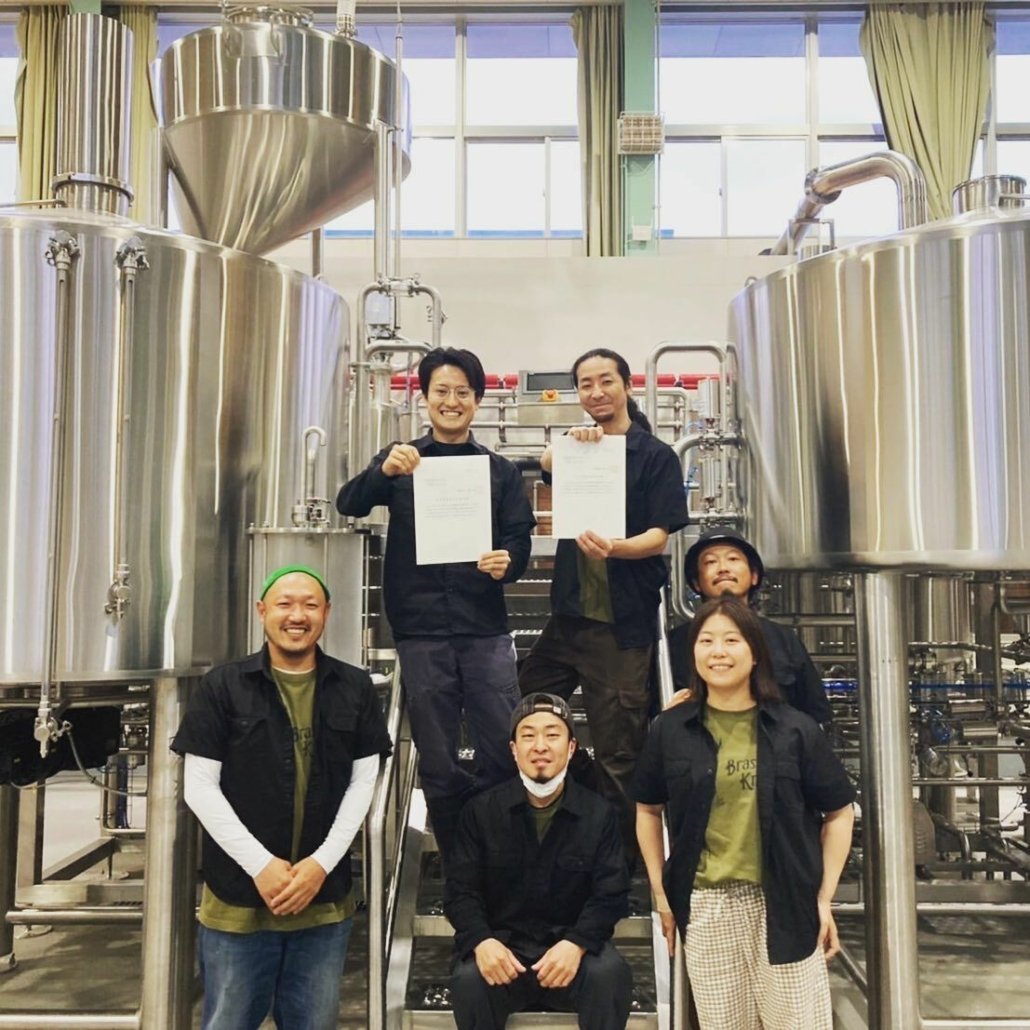
FAQs
Q: What is the difference between a conical fermenter and a unitank?
A: A conical fermenter has a cone-shaped bottom that makes it easy to remove sediment and yeast. A unitank is versatile, serving both as a fermenter and conditioning tank, which saves space and reduces the need for multiple vessels.
Q: How do I choose the right size for a beer fermentation tank?
A: The size of the tank depends on your brewing scale. Homebrewers might opt for tanks between 5-20 gallons, while commercial breweries typically require tanks ranging from 500 gallons to several thousand gallons.
Q: Can I use plastic fermenters for commercial brewing?
A: While plastic fermenters are affordable and easy to handle, they are generally not recommended for large-scale commercial brewing due to their lower durability and susceptibility to scratching.
Q: How often should beer fermentation tanks be cleaned?
A: Cleaning should be done after every batch to prevent contamination. Regular maintenance and inspections will also ensure the longevity and performance of the tank.
Q: What is the role of temperature control in fermentation?
A: Temperature control is crucial for maintaining the correct fermentation conditions. It affects yeast activity and the final flavor profile of the beer. Tanks with built-in jackets or external cooling systems are often used for precise temperature management.

